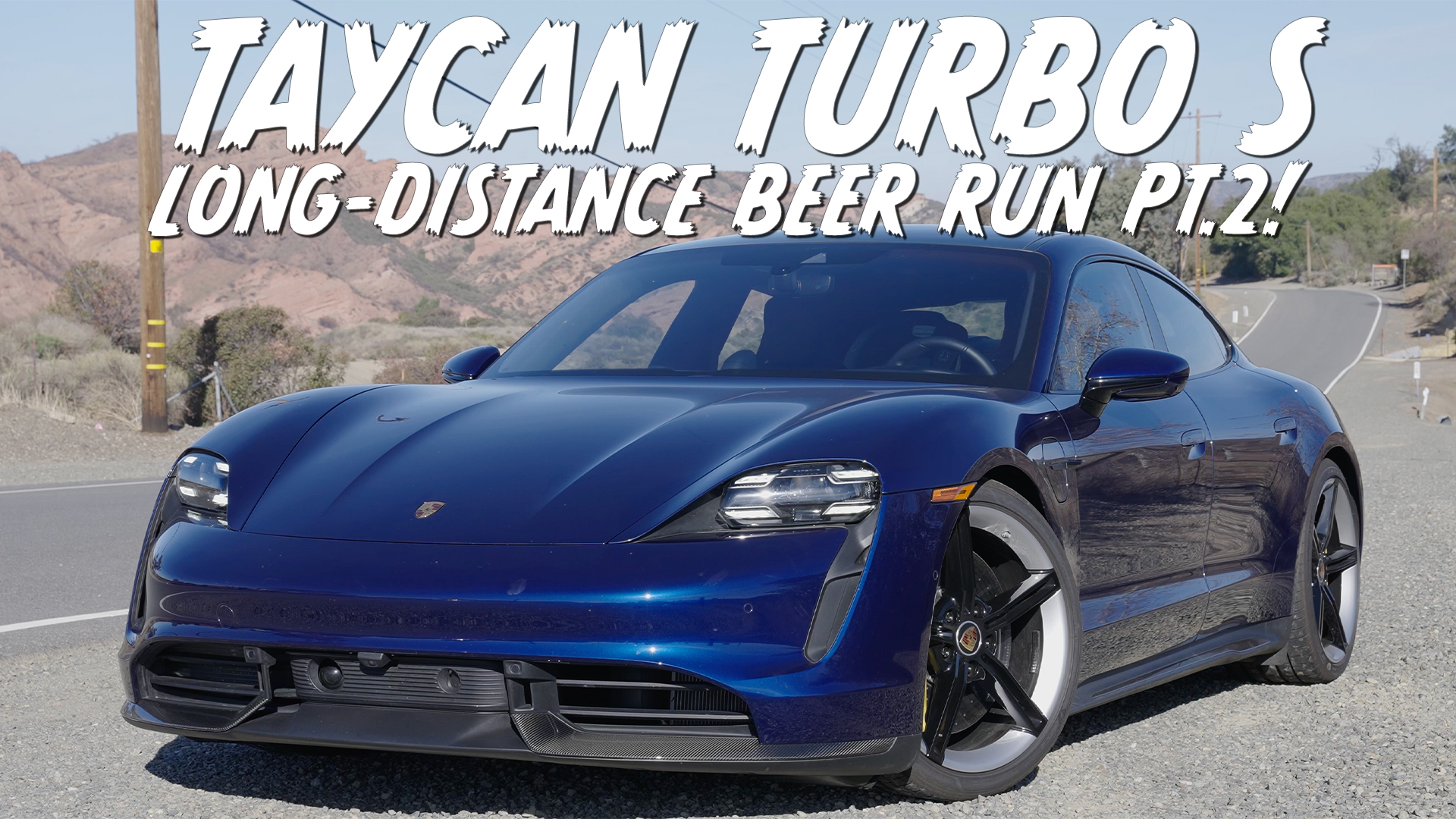Sometime last summer, I used a Porsche Taycan to go on a mini road trip in search of great beer. The Taycan 4S was an amazing machine and it left me wanting to sample the higher-spec versions of this all-electric Porsche. And that’s what’s happening here now. This is long-distance beer run part two and this time I’ve done it with the Taycan Turbo S.
This is a significant jump in power. The Taycan 4S with Performance Battery pack produces 562 horsepower. Here on the Turbo S, we’re dealing with 750 hp. That’s enough to rocket this thing from 0-60 miles per hour in around 2.5 seconds. It will get to 100 mph in 6 seconds. And it will make you smile and laugh anytime you mash the accelerator. As fun as it is, this Porsche is also wickedly expensive. The base price is around $186,000 and since this is Porsche, you can quickly push that price tag north of $200k. The good news is that the 4S is insane fun too for a more reasonable (relatively speaking) $105k. Additionally, Porsche now offers a rear-wheel-drive base level Taycan that starts a bit over $80k. It’s all a lot of money, of course, but it’s also one of the best cars I’ve ever driven.
If you want to see how it all went down with the Taycan 4S, you can watch that video here:
More interesting though is the fact that Porsche is coming out with the wagon version of the Taycan, and it’s called the Taycan CrossTurismo. And yes… I am already scheming up routes for that one. It holds way more stuff, after all. Maybe an overnighter trip is in order with my mountain bike clamped to the roof? Or it’s time for a long-distance winery run? Either way, I’m paying close attention to that version.
[Disclaimer: Porsche tossed me the keys to the Taycan and included a fully charged battery pack.]


Leave a Reply